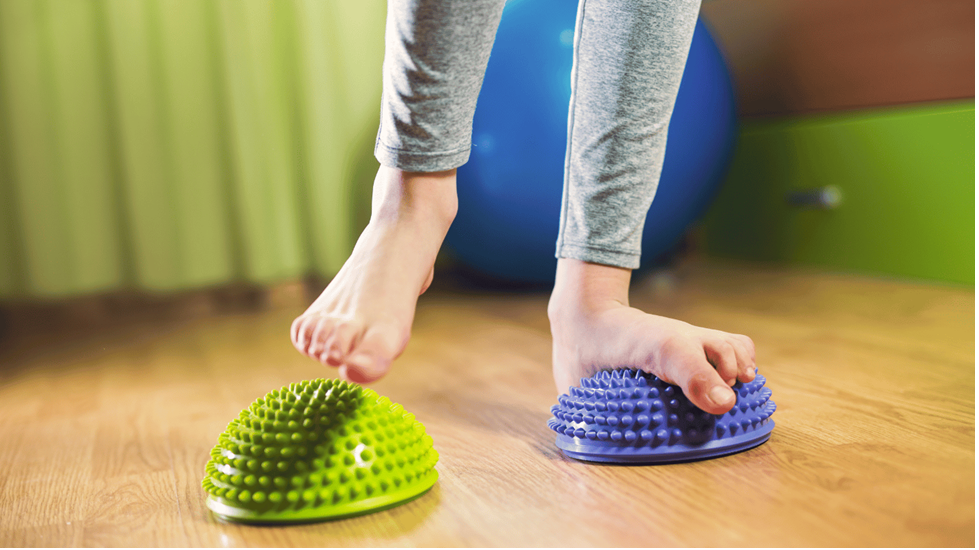
Your feet do a lot more than get you from point A to point B. They support your entire body, absorb shock with every step, and help you stay balanced and mobile. So when something feels off—like aching arches, tired legs, or shoes that never seem to fit quite right—it’s worth paying attention.
For many people, the issue traces back to flat feet. Also known as fallen arches, flat feet can be painless in some cases, but for others, they can lead to ongoing discomfort, joint strain, or even changes in how you walk.
“Flat feet may seem like a minor issue, but over time, they can have a ripple effect on your knees, hips, and back,” says Marco Ucciferri, DPM, a podiatrist at Summit Health. “That’s why early evaluation is so important—especially if you’re already noticing pain or alignment issues.”
Whether you’re dealing with daily foot pain or just wondering if flat feet need to be “fixed” at all, this article will help you understand your options. We’ll break down what causes flat feet, how to tell when treatment is needed, and how Summit Health’s foot and ankle specialists can help you feel better from the ground up.
What Are Flat Feet and Do They Always Need Treatment?
Flat feet, or fallen arches, happen when the arch along the inside of your foot is unusually low or disappears entirely when you stand. Instead of curving upward like a bowstring, the entire sole makes contact with the floor.
This change in foot shape may be present from childhood or develop over time due to aging, injury, or simple wear and tear.
Some people with flat feet never have symptoms and don’t need any intervention. But for others, the condition leads to pain, fatigue, or changes in the way they walk, especially after standing for long periods or during exercise.
“Flat feet aren’t always a problem—plenty of people live symptom-free,” says Dr. Ucciferri. “But if your feet are starting to slow you down or interfere with your daily life, that’s when it’s time to get help.”
Can Flat Feet Be Corrected? Exploring Your Options
If you’ve been told you have flat feet, your first question might be: Can this be fixed? The short answer is: it depends.
While not all flat feet require correction, there are several treatment options that can significantly reduce pain, improve function, and support better alignment.
How to Fix Flat Feet Without Surgery
Most people with flat feet respond well to conservative care.
“We usually start with the least invasive options first,” explains Dr. Ucciferri. “Supportive footwear, custom orthotics, and targeted exercises can go a long way in improving comfort and restoring balance.”
Treatment depends on your symptoms and the type of flat foot you have—flexible or rigid. Some of the most common treatments include:
- Supportive shoes: Good arch support and a wide toe box help reduce stress.
- Custom orthotics: These inserts provide tailored support and reduce pressure points.
- Stretching and strengthening: Exercises can address muscle imbalances and tight tendons.
- Anti-inflammatories and icing: These relieve flare-ups and reduce swelling.
- Weight management: Less weight on your feet can mean less pain.
“Each patient’s treatment plan is unique,” Dr. Ucciferri adds. “We’re not just looking at your feet—we’re looking at how your whole body moves.”
When Do I Need Surgery for Flat Feet?
Surgery is rarely a first step but may be necessary when symptoms are severe or other treatments haven’t worked.
“Surgical intervention is usually a last resort, reserved for cases where pain is persistent and the foot’s structure is significantly compromised,” says Dr. Ucciferri.
Procedures vary from tendon repairs to realigning bones in the foot. Your podiatrist will assess your case and walk you through recovery expectations.
“The goal isn’t just to fix the arch—it’s to help patients walk, move, and live without pain,” Dr. Ucciferri explains.
Flat Feet in Children vs. Adults: What’s Different?
Flat feet can appear at any age, but treatment depends on the individual.
Flat Feet in Children
Most kids are born with flat feet and develop arches naturally over time.
“In many cases, pediatric flat feet are nothing to worry about,” says Dr. Ucciferri. “But if your child is in pain or struggling to keep up during activity, it’s worth getting evaluated.”
Red flags to watch for include pain, frequent tripping, or shoes wearing unevenly. Treatment might include supportive shoes or orthotics—but surgery is rarely needed.
“Kids’ feet are still growing, so conservative treatment is almost always effective,” he adds.
Flat Feet in Adults
Adults may develop flat feet later in life—often due to tendon weakening or injury.
“Adult-acquired flatfoot is something we see often,” Dr. Ucciferri says. “It tends to progress slowly, so catching it early is key to avoiding long-term problems.”
Common symptoms include ongoing foot or ankle pain, changes in gait, and swelling. Proper diagnosis and early treatment are critical for long-term mobility.
When to See a Specialist—and How Summit Health Can Help
If your feet are hurting or your movement has changed, don’t ignore it.
"Pain is never normal,” says Dr. Ucciferri. “If you’re changing how you walk or avoiding activity, it’s time to talk to a specialist.”
At Summit Health, our experienced podiatrists offer a range of solutions, from non-invasive therapies to surgical options when needed. We’ll work with you to build a plan that keeps you active, balanced, and pain-free.
